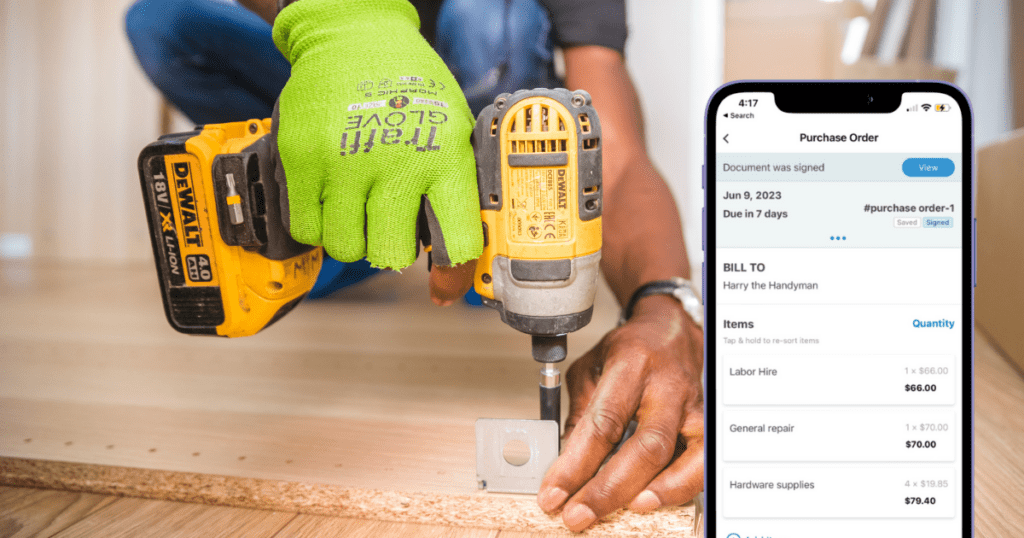
The basics of bookkeeping for a handyman business

How to do bookkeeping as a handyman
Running a successful handyman business requires not only providing excellent services but also maintaining accurate financial records. Bookkeeping plays a vital role in managing your business finances and ensuring its long-term success.
Use Bookipi’s invoicing app to simplify the process of billing clients.
This post covers basic bookkeeping processes you can implement for your trades and handyman business.

Bookkeeping steps for handymen
Step 1: Organize your financial documents
Start by organizing your financial documents like receipts, invoices, and bank statements. You can create a filing system and/or store documents digitally. Investing in cloud software like invoicing and expense apps means that you can digitally store documents that you can access from anywhere.
Whether you’re on a trades job or getting supplies, accessing invoices and financial records on your mobile devices like using Bookipi invoice app saves you lots of time.
Step 2: Track revenue
Every handyman business needs to know whether they’re getting paid for their services. Setting up proper billing processes and sending invoices for clients ensures you get paid accurately and on time.
You can download our free editable estimate templates for handymen during the quoting process and use our free handyman invoice templates for billing. To speed up your sales documentation process, get the easiest invoicing app, Bookipi Invoice. Create professional invoices in minutes and try Bookipi for free. Simply input your handyman services, prices, and client details.
You can track payments received, outstanding invoices and send automated payment reminders to clients to maintain steady cash flow.
Step 3: Track expenses
It’s important to accurately track business expenses. By doing so, you’ll get a full picture of your handyman business’s financial health and maximize any business tax deductions. Use Bookipi Expense to track and record all business-related expenses. You can set up different categories like handyman supplies, marketing costs and vehicle costs, for easier expense reporting during tax season.
Step 4: Implement a budget
Creating a budget is essential for proper financial management. Analyze your expenses and revenue to determine your average monthly income. The process of making a budget makes you think about areas where you can potentially cut costs or allocate resources more efficiently. With Bookipi’s easy reports, you get instant insights into your income. Combined with expense tracking, you can make informed decisions and make a simple budget.
Step 5: Generate professional proposals
If you’re pitching for a renovation project, your handyman or trades business can use Bookipi’s proposal maker to make professional business proposals. Outline the scope of work, timelines, and cost estimates using our proposal maker. By sending customers professional proposals, you present your services in a polished and organized manner, enhancing your chances of securing new projects.
Step 6: Streamline tax preparation
Tax season can be overwhelming, but with proper bookkeeping, you can simplify the process. Bookipi makes it simple to add simple bookkeeping processes for accurate income and expense tracking, budgeting and record-keeping. Having this information handy in one place makes tax filings simple.
Maintaining accurate financial records using Bookipi’s software helps you make informed business decisions and ensure your long-term success as a handyman business owner.



